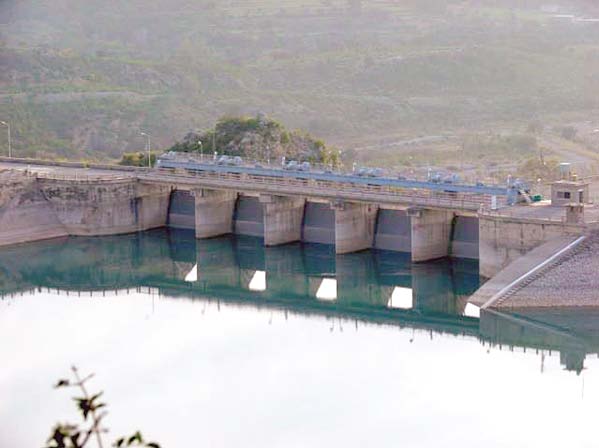-

-
-
Loading

Loading


The water levels in all three major dams supplying water to the twin cities of Rawalpindi and Islamabad — Rawal, Simly, and Khanpur — are dropping rapidly due to significantly reduced rainfall this year. The alarming decline is further exacerbated by a prolonged dry spell, which has also caused a steep fall in the groundwater table. In Rawalpindi, the water table has fallen below 700 feet, leading to a severe water shortage across the city. A water rationing plan has been prepared for implementation in the second half of May. The onset of the water crisis has led to a boom in the private water tanker business. According to the National Drought Monitoring and Early Warning Centre (NDM&EWC) in Islamabad, Rawal Dam has a storage capacity of 1,752 feet and a dead level of 1,708 feet. Its current water level is at 1,741.10 feet and continues to decline. Simly Dam, which supplies water exclusively to Islamabad, has a capacity of 2,315 feet and a dead level of 2,233 feet, with the current level at 2,263.80 feet. Khanpur Dam, located in Khyber Pakhtunkhwa's Abbottabad District, has a capacity of 1,982 feet and a dead level of 1,910 feet; its current level is at 1,937.58 feet. There is currently enough water in the dams to meet the twin cities' needs for 40 to 45 days. If heavy rainfall does not occur within the next 10 to 15 days, water levels are expected to fall drastically, also due to evaporation under intense heat. Cattle herders have resumed bathing their buffaloes in Rawal Dam due to the drop in water levels. WASA spokesperson and Director Muhammad Umar Farooq confirmed the water shortage caused by reduced rainfall. The Water and Sanitation Agency has implemented a "Water Control Plan" to manage the situation. This includes crackdowns on water theft and defaulters of water bills, and bans on using water from pipelines for gardens, driveways, or washing cars. Car wash stations are being required to install water recycling systems. WASA operates 500 tube wells, most of which date back to the 1990s and have shallow depths, making them prone to drying out. Load has increased on the newer tube wells, with some now operating for extended hours. Free water delivery through tankers is being provided in affected areas, though private water tanker requests carry a fee. The Chahan Dam Water Supply Scheme is progressing slowly, but its completion is expected to significantly improve supply. Officials emphasise that with changing climate patterns, tube wells are no longer a viable long-term solution - dam water is essential. If implemented, the Ghazi Barotha Project could address the water shortage in Rawalpindi and Islamabad for the next 100 years.
if you want to get more information about this news then click on below link
More Detail